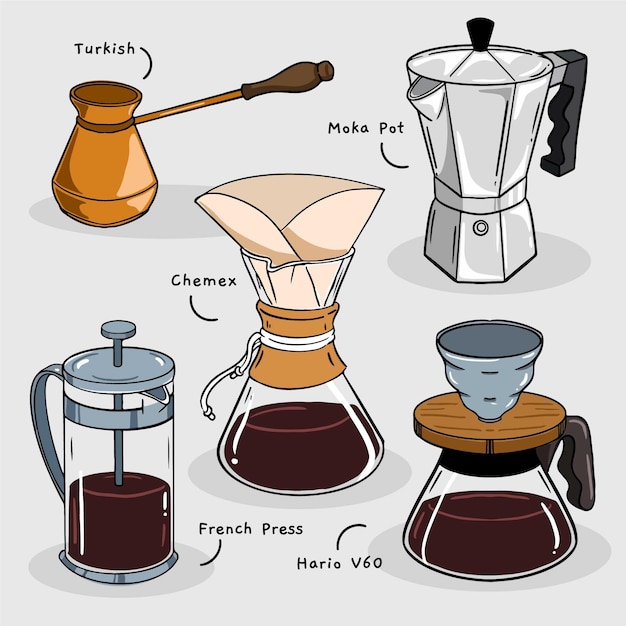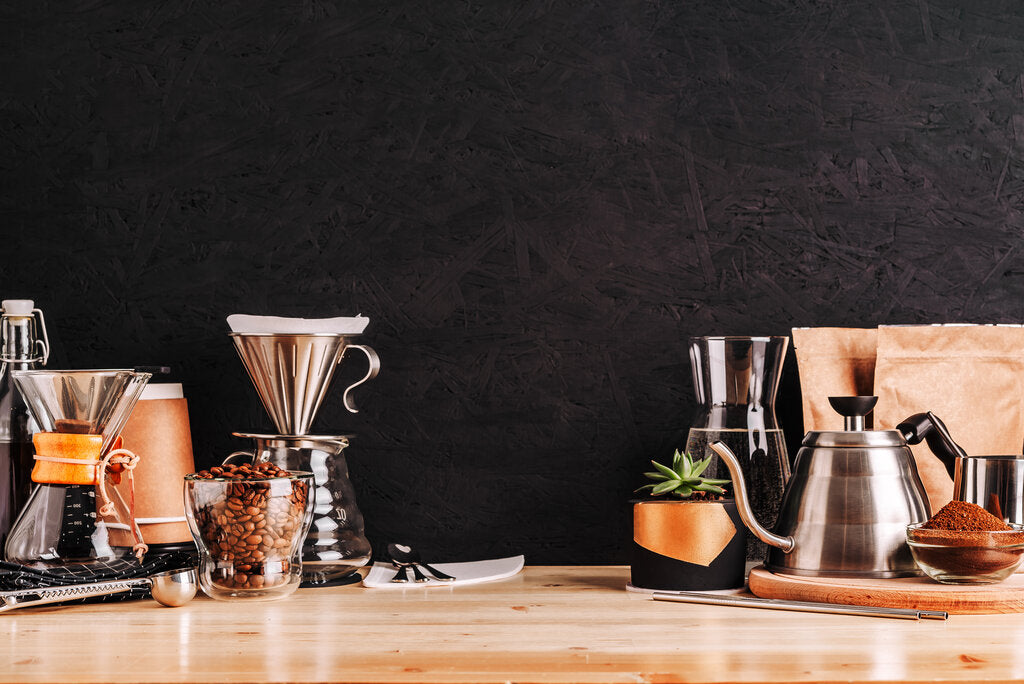The Ultimate Contrast of Popular Coffee Brewing Methods for Home Baristas
The Ultimate Contrast of Popular Coffee Brewing Methods for Home Baristas
Blog Article
The Scientific Research Behind Coffee Brewing: Just How Temperature Level and Time Affect Your Beverage
Comprehending the scientific research behind coffee brewing discloses that temperature level and time are not simple variables however critical elements that dictate the drink's taste account and general top quality. As we explore the nuances of these components, the question emerges: just how can one effectively balance temperature level and time to attain that ideal mixture?
The Chemistry of Coffee Extraction
The chemistry of coffee removal explores the intricate procedures that transform raw coffee beans right into the fragrant beverage taken pleasure in worldwide. This change largely includes the solubility of various substances existing in the beans, which are influenced by aspects such as work size, water high quality, and the developing technique used.
During the brewing procedure, warm water serves as a solvent, removing soluble compounds, consisting of high levels of caffeine, lipids, acids, and sugars, from the coffee premises. Each compound adds to the taste profile, scent, and body of the last drink. For instance, acids are in charge of intense and appetizing notes, while oils add to a rich mouthfeel.
The removal procedure is not consistent; different substances dissolve at different rates. The preliminary phases of developing essence acids and sugars, causing a positive acidity, while prolonged extraction can result in resentment as a result of over-extraction of undesirable compounds. Comprehending these chemical communications is essential for enhancing brewing methods, as the balance between extraction time and water temperature level can significantly influence the overall quality of the coffee. Inevitably, mastering the chemistry of coffee removal is essential to accomplishing a delicious and all-around cup.
Suitable Brewing Temperatures
Finding the right developing temperature level is necessary for unlocking the full possibility of coffee tastes and aromas - coffee brewing methods. Study suggests that the optimal array for developing coffee exists between 195 ° F to 205 ° F(90 ° C to 96 ° C) Within this array, the extraction procedure successfully liquifies the desirable soluble substances in coffee beans, causing a balanced and flavorful cup
Developing at lower temperatures, such as below 195 ° F(90 ° C ), might lead to under-extraction, producing a weak and acidic mixture with soft tastes. On the other hand, developing at temperature levels surpassing 205 ° F(96 ° C) can lead to over-extraction, creating a bitter and severe taste as a result of the extreme dissolution of unwanted compounds, such as tannins.
In addition, the optimal developing temperature can differ depending on the coffee bean type and roast degree. For example, lighter roasts often gain from slightly higher temperature levels to enhance their intricate taste accounts, while darker roasts might be better suited to reduced temperature levels to mitigate resentment.
Eventually, preserving precision in developing temperature levels is crucial for attaining an unified equilibrium of tastes, guaranteeing that every mug of coffee provides a rewarding sensory experience.
Effect of Brewing Time
Developing time plays a critical duty in figuring out the taste account and overall quality of coffee. The removal process, which affects the preference, scent, and body of the beverage, is greatly dependent on the length of time the coffee premises touch with water. Shorter developing times can cause under-extraction, resulting in a weak or sour flavor, as insufficient soluble compounds are liquified. Alternatively, prolonged developing can bring about over-extraction, where unfavorable substances are released, leading to a bitter or astringent taste.
Optimum developing time varies relying on the technique utilized and the grind size of the coffee. As an example, a French press normally needs concerning 4 mins, while espresso removal is normally completed within 25 to 30 secs. It is necessary to calibrate developing time in conjunction with various other variables, such as water temperature level and coffee-to-water ratio, to attain the preferred taste profile.
Recognizing the effect of developing time makes it possible for coffee lovers to improve their brewing strategies, eventually boosting the sensory experience of their cup (coffee brewing methods). With mindful attention to this variable, one can open the complete potential of Resources the coffee, disclosing its unique characteristics and subtleties
Developing Methods and Their Impacts

As an example, techniques like French press and chilly mixture permit a much longer steeping time, resulting in a fuller body and robust flavor as a result of increased extraction of oils and soluble solids. Conversely, espresso brewing utilizes high pressure and a much shorter removal time, producing a concentrated shot that emphasizes extreme tastes and an abundant crema.
Pour-over strategies, such as Chemex or V60, supply a more controlled removal process, enabling the maker to adjust circulation price and water circulation, which can boost illumination and clarity. On the other hand, percolation methods cycle water through the coffee premises numerous times, leading to a stronger, commonly bitter flavor.
Finally, using paper filters versus steel filters can additionally view affect the final taste; paper filters normally generate a cleaner cup by capturing oils and great particles, while steel filters permit more oils to travel through, adding to a fuller mouthfeel - coffee brewing methods. Comprehending these nuances can boost the coffee experience substantially
Tips for Refining Your Brew
A well-executed brew can change even the simplest coffee right into an exceptional experience. To accomplish this, interest to detail is necessary. Begin with top quality, newly roasted beans, as their taste profile diminishes gradually. Grind the beans just prior to brewing to make the most of quality, making sure the work size matches your developing method-- coarser for French press and finer for coffee.
Water high quality plays a critical duty; use filteringed system water complimentary from impurities. The suitable developing temperature varies in between 195 ° F and 205 ° F(90 check ° C to 96 ° C ) Too hot can blister the coffee, while too great may under-extract flavors.
Timing is equally crucial. For immersion techniques, soaking for 3 to five minutes is ideal, whereas drip approaches normally take about five minutes. Explore mixture times to locate your preferred stamina.

Conclusion
In recap, the intricate relationship between temperature and time is paramount in the coffee brewing process. Abiding by ideal brewing temperatures between 195 ° F and 205 ° F, alongside precise timing tailored to each approach, makes certain the wanted taste account is accomplished. Comprehending these scientific principles encourages people to fine-tune their brewing techniques, inevitably bring about an extra well balanced and delightful coffee experience. Proficiency of these elements is vital for any coffee enthusiast seeking excellence in their beverage.
Comprehending the science behind coffee developing exposes that temperature and time are not mere variables yet critical elements that determine the beverage's taste profile and total quality. Recognizing these chemical communications is critical for enhancing developing methods, as the equilibrium between removal time and water temperature can significantly affect the total high quality of the coffee.Developing time plays a critical duty in identifying the taste profile and overall top quality of coffee. By focusing on these aspects-- bean top quality, grind size, water temperature, soaking time, and ratio-- you can raise your coffee developing process, resulting in a constantly superior mug.
In summary, the detailed relationship between temperature level and time is paramount in the coffee brewing procedure.
Report this page